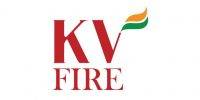 The adage “Necessity is the mother of invention” definitely can be applied to the fire pump. It is often taken for granted and is always out of sight, yet it is a critical part of the fixed fire protection for many buildings. A previous article established the fire hydrant as a critical link in the chain of fire protection; the fixed fire or booster pump is another critical component of the water supply system. Once usually found only in large manufacturing complexes or used for high-rise buildings, these types of pumps are now widely used for many applications. They serve only one purpose: to increase water supply pressure within a fixed fire protection system. They cannot create water-they can only boost the pressure of the fire protection water supply to provide sufficient fire flow for fixed fire sprinkler systems and standpipe/hose supply.
The adage “Necessity is the mother of invention” definitely can be applied to the fire pump. It is often taken for granted and is always out of sight, yet it is a critical part of the fixed fire protection for many buildings. A previous article established the fire hydrant as a critical link in the chain of fire protection; the fixed fire or booster pump is another critical component of the water supply system. Once usually found only in large manufacturing complexes or used for high-rise buildings, these types of pumps are now widely used for many applications. They serve only one purpose: to increase water supply pressure within a fixed fire protection system. They cannot create water-they can only boost the pressure of the fire protection water supply to provide sufficient fire flow for fixed fire sprinkler systems and standpipe/hose supply.
- Typical valve arrangements; most valves are labeled “control valve.” This does not clearly identify the purpose of the valve. You must determine this beforehand or through a visual check immediately on arrival at the pump room. Typically, all valves should be open except the main control valve to the test header.
Because these pumps are often hidden in a service area or out-of-the-way places, they are often overlooked. However, you must recognize the importance of these fire protection workhorses in fire suppression operations and know how to operate them. Let’s take a closer look at these important devices.
- Test header (left) and fire department connection (FDC) (right). The test header, which is for a 1,500-gpm-capacity pump, is used to conduct initial and annual flow tests. The FDC is used to supply the fire protection system from a hydrant through a pumper. The main control value to this test header from the pump discharge is usually found in the pump room. Good signage facilitates identification and initiation of actions during an emergency response.
When you look at the origin of the fire pump, it is easy to understand why it has been an important part of the fire protection water supply for so many years. Although it is difficult to determine exactly when the first fire pumps were put into service, it is well documented that they were used widely by the early 1900s. Early sales literature seems to correlate the explosive growth in the demand for fire pumps with the emergence of the high-rise building boom. This is logical, since the water supply systems for most major cities had been planned to meet water requirements for residential and low-rise occupancies. Thus, there was no demand for high-pressure systems capable of providing water supply at sufficient pressure to reach upper floors of tall buildings. As long as there was sufficient water supply in terms of gallons available, the simple solution was to provide a pump to boost the pressure to obtain the water supply needed for firefighting. Domestic water demands on upper floors could be satisfied using high-pressure, low-volume pumps or low-volume, high-pressure pumps to fill tanks on the upper floors.
- Stand-alone pump house. Note the static water supply surface tank at the rear. The test header on the building indicates a 1,500-gpm pump. Divide the total capacity of the surface tank by the rated capacity of the pump to obtain the approximate duration of the water supply. Consuming less or more than the rated capacity would affect the duration. Note in the foreground the post indicator valves for the underground piping.
However, the demand for the sufficient volume and pressure needed for firefighting had to be achieved by supplying sufficient pressure and volume directly to upper floors. The solution was to install dedicated booster pumps with sufficient capacity and pressure to meet demands for fire sprinklers, standpipes, and combined sprinkler and standpipe systems. Before too long, the benefits of using fire pumps to improve fire protection water supplies led to their expanded use beyond high-rise applications and in large industrial complexes, hospitals, warehouses, and large facilities requiring augmented water supplies.
 BASIC FIRE PUMP INSTALLATIONS
BASIC FIRE PUMP INSTALLATIONS
Essentially, fire pump installation has two basic parts: the pump and the driver. The pump serves the single purpose of providing the necessary flow and pressure to meet the demands and design of the fire protection system. Two basic types of pumps typically are found in most applications-the centrifugal split case and the vertical turbine. The centrifugal split case is usually used in applications where the water supply to the pump intake is under pressure. The vertical turbine is usually used in situations where the water supply is from a well, cistern, or body of water.
- Electric motor (driver) and single-stage pump. The jockey pump for maintaining system pressure and very low flow is in the foreground. The relief valve is upper right.
The driver refers to the method by which energy is provided to the pump. Simply put, a driver is the method by which energy is imparted to the pump and then into the water to supply the system. Originally, there were several “approved” drivers, which included steam, water, gasoline, diesel, and electric motors. Steam was typically used with a turbine as the driver mechanism at very large industrial complexes that used boilers and had excess steam that could be used to operate the pump. Gasoline engines were an offshoot of the automobile industry and seemed to be a natural choice. Water or hydraulic systems were associated with early energy sources and were used rarely.
- This pump control panel and transfer switch represent a typical control panel arrangement for an electric motor-driven pump. The pilot lights indicate the status of the electric power supply and other functions. Pressure switches and other components are inside the panel. Because of electrical safety requirements, these panels cannot be opened while energized unless the safety system is disengaged. The panel on the right is the automatic transfer switch, which will automatically switch the pump from normal utility power to a generator if utility power is lost. Note that not all electric pumps have generator backup power.
The electric motor controller provides the electric current to operate the motor driver and also provides monitoring of the pump operation, including the start and stop pressure monitoring. The diesel driver controller provides the method for starting the diesel engine and other features similar to those of the electric motor driver. However, whereas an electric motor may be shut down quickly after starting, the diesel motor should be allowed to reach operating temperature to reduce engine problems. Therefore, the diesel driver usually has a timer that will not permit shutting down the driver for a preselected time, usually 30 minutes. Electric motor-driven pumps must operate for a minimum of 10 minutes.
Other elements of a typical installation, such as jockey pump, relief valve, intake, discharge, test header, and control valves, are discussed below. Early controllers could only be manually operated; an employee had to be designated to manually start the pump if a fire alarm was received. The advent of the automatic controller changed this: The pump could be started automatically in response to a fire or potential fire. Typically, this is accomplished by a sensor’s monitoring the pressure within the system side of the pump; a drop in pressure caused by an open sprinkler head or a hose valve will cause the pump to start.
 FIRE PUMP INSTALLATION COMPONENTS
FIRE PUMP INSTALLATION COMPONENTS
In addition to the pump, driver, and controller, there are other important elements of the installation.
Jockey pump. To prevent the main pump from being started and stopped unnecessarily, the jockey pump is designed to maintain the pressure in the system. This pump can produce high pressure but very low volume. Thus, the jockey pump maintains the pressure in the system when there is a minor loss of pressure from small leaks or because of changes in pressure within the system. However, because of the low volume produced by the jockey pump, the operation of a single sprinkler head is sufficient to lower the pressure beyond the jockey pump’s capability and activate the main fire pump.
Hoses. Hose connections are provided for two functions. The typical siamese connection for augmenting the water supply is upstream of the pump intake. The test header, downstream of the pump discharge, can be used to test the performance of the fire pump by measuring the flow and pressure. In typical installations, there is one 21⁄2-inch discharge for every 250 gallons of the pump’s capacity-thus, a 1,000-gallon pump would have four hose connections. Many of the newer installations are equipped with a flowmeter that gives a direct reading of the pump’s output flow. These installations may not have a test header.
Intake and discharge points. The pump intake and discharge points have specific design specifications. On the intake side, the pipe is usually flat or level across the top and usually conical on the discharge side. The flat pipe section reduces the potential for introducing air into the pump because of the hydraulic flow of water. The air could cause the pump to lose prime and cause serious damage. The water control valve on the intake side must be an OS & Y style, which allows the gate to be completely removed from the intake stream. Other portions of the system typically have butterfly valves. If a butterfly valve were used on the pump intake side, the valve’s rubber gasket could be torn loose and become lodged in the pump intake at the impeller.
Control devices. Two main control devices are on the controller panel. The controller is usually found in the automatic mode, but the setting can be changed to manual. This enables the driver to start manually for test purposes or if the pump does not start in the automatic mode. There is also an emergency feature that makes it possible to start the pump driver in emergency situations, such as when the pump fails to start automatically during a fire.
Driver protective features. There are some protective features for drivers, such as circuit breakers. However, they can usually be bypassed under fire conditions. The idea is that it may be better to keep the motor operating and take a chance on burning up the driver or damaging the pump instead of losing the building because of a mechanical problem. Only the basics of pump installation are covered here; the intricate elements are beyond the scope of this article. Properly investigate each installation you encounter prior to a fire.
WATER SUPPLIES FOR FIRE PUMPS
The two basic sources of water supply are the municipal water system and static supplies. A connection to the pump intake, separate from the domestic connection to the building, is the most common source. This connection’s size is based on flow tests of the municipal water supply (to determine the available supply). The pressure of the municipal water supply is added to that produced by the pump, which results in a combined, or discharge, pressure.
Static water supplies are usually in the form of a surface or an elevated tank, but they can also be a cistern or wet well built in a stream, a canal, or a body of water. Split-case horizontal fire pumps are most often employed with surface or elevated tank static supplies, where some pressure is provided to the intake side of the pump because of the elevated tank or pressure from the water elevation in a surface tank above the pump’s intake point. Although it is possible, by using a foot valve, to use a split-case horizontal pump with a surface water supply, the vertical turbine pump is most commonly used. This installation is similar to that of submersible pumps in that the pump bowls are submerged in the water supply and the driver is at the end of the shaft at the top of the installation. These pumps are most commonly used with wet wells; however, they can be used with installations that are taking suction from an aquifer ground water source.
When a tank is used, it is relatively easy to determine the water available for firefighting operations. If the tank holds 50,000 gallons and is connected to a pump capable of delivering 1,500 gallons per minute, the water supply can be counted on for a period of approximately 33 minutes. Obviously, if the actual flow is less than the maximum, the duration may be longer, say 100 minutes at 500 gallons per minute. However, if the pump is producing in excess of its rated capacity, the duration may be much shorter. As an example, a 1,500-gpm pump must be able to deliver 150 percent of its rated capacity, or 2,250 gpm maximum. In this situation, our 50,000-gallon static water supply would run out in approximately 22 minutes. More about pump capacities will follow.
The point is, when you have a finite water supply, there is some point at which the supply will be exhausted. If the fire is out before or at that point, there is no problem. If it is not, you must have another plan. Therefore, when preplanning properties with fixed water supplies, determine if a tanker shuttle system should be incorporated in the incident management plan. If you make this decision after the water supply has been exhausted, the fire probably would have considerably advanced before the supply could be replenished and you may never recover. Simply stated, you need to know the pumping capacity and the static water supply available in gallons as part of your prefire plan. In the situation with supply from natural water sources, you usually will not have to worry about running out of water. However, if your area experiences a prolonged drought, the surface water may be considerably lower than normal. A final reminder: Fire pumps cannot produce water; they can only provide the needed pressure at a required flow capacity.
TESTING AND MAINTENANCE
Because of the nature of fire pump installations, testing and maintenance are critical. Since the pump operates only if there is a fire, that is not the time to find out it is not working properly. After installation, an initial pump acceptance test is required. This is performed to determine if the pump will operate as designed. The pump must be able to meet the following points on the performance curve:
The pump must show that it will not exceed 100 percent to 140 percent (for vertical turbine pumps) of the rated pressure at zero flow (in gallons).
The next point is 100 percent of its rated flow at 100 percent of its rated pressure.
At 150 percent of its rated flow, the pressure should not be less than 65 percent of its rated pressure.
Example: A pump is rated to provide 1,500 gallons per minute at 100 psi. The pump should produce no more than 100 percent (horizontal split case) to 140 percent (vertical turbine) of the rated pressure at zero flow-1,500 gpm at 100 psi and 2,250 gpm at 65 psi (minimum).
As part of the initial acceptance, these points should be plotted on a hydraulic graph paper and should prove the pump performance and serve as the basis for evaluating future flow tests. This test must be repeated annually at a minimum. Any significant deviation from the design capacity can indicate problems that should be investigated. A weekly churn test (operating the pump without flow) is required (Figure 1). You can program the timer on the pump controller to initiate this test automatically. However, someone should check the pump conditions and verify that the pump started. Electric motor-driven pumps should operate for five minutes and diesel motors for 30 minutes to reach operating temperature. These weekly tests are conducted with no flow, using the relief valve to keep the pressure within the system from becoming excessive. For other inspection and testing requirements, consult National Fire Protection Association (NFPA) 20,Standard for the Installation of Stationary Fire Pumps for Fire Protection, and NFPA 25, Inspection, Testing, and Maintenance of Water-Based Fire Protection Systems
FIRE DEPARTMENT OPERATIONS
When planning for responses to properties that use fire pumps as part of the fixed fire protection system, you must be certain to address some specific issues, such as the following.
In your prefire plans, identify the location of the pump room. Document the pump’s location as well as some basic information such as the pump’s capacity, the water supply source, the type of driver, and accessibility.
One of the first-arriving units should be assigned to access the fire pump room, to determine if the pump is operating. If it is not, and there is a fire, the pump can be started manually using the control panel. The individual assigned to this position should have a radio and should remain at the pump room until the incident has been concluded or the individual is relieved by another firefighter. Firefighters stationed at this location may feel they are not contributing to the handling of the incident; however, this position is critical. The outcome of the combat operations depends on the water supply to the fire sprinklers-if the yard mains supplying fire department operations and the pump should fail, the fire could rapidly overwhelm the suppression activity.
During such a failure, the firefighter might be able to restart the pump; at the very least, he would be able to advise the incident commander that this vital element, the water supply system, has been lost. At this point, steps can be taken to replace the fixed fire pump with an engine company.
One final note: Shutting down the fire pump before the fire has been completely extinguished can have the same effect as closing a sprinkler valve too soon. The fire can rekindle, and a delay in placing the pump back in operation could be enough to allow the fire to exceed the capability of the fixed suppression system. At the conclusion of the fire, a licensed contractor should inspect the pump assembly to make certain that it is put back in the standby mode and that no damage has occurred.




















































